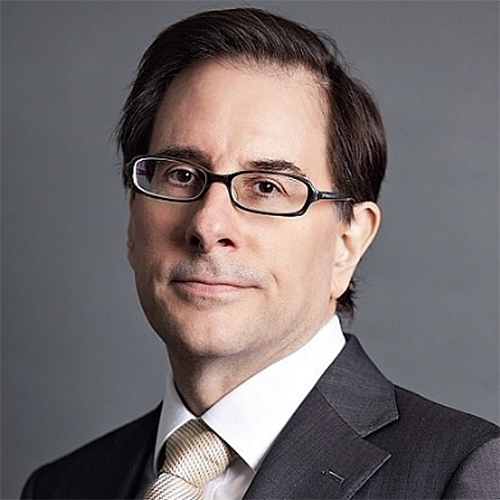The relative absence of small cap stocks from the asset allocation of institutional investors is becoming an issue amid the current low interest rate environment that is pushing the search for yield to untapped areas.
Based on the MSCI, 85% of the total capitalization includes large and midcap stocks while small caps represent only 14% and the remaining 1% is in micro cap indices.
Investors tend to put their money in generic equity allocations, usually a global equity portfolio, that is unlikely to include small caps.
The argument for small caps rests on four main factors. First is their ability to outperform conventional equities in a bull market with small caps outperforming by an average 10% from January 2000 to June 2014.
Secondly, small caps outperformed large cap stocks by an average of 2.9% from 1927-2010, indicating their capacity to outperform large caps over a longer-term horizon.
Third is that small caps are not yet as well covered by analysts as other sectors of the stock market, thus leaving a lot of room for generating alpha. This means fund managers have more opportunities to explore valuation inefficiencies through active investment strategies.
And the fourth factor is that small caps provide a means of diversification for equity portfolios – improving returns while keeping risks relatively unchanged.
But critics claim that the challenge involved with small cap investing is that these stocks are generally considered illiquid, resulting in limited access for most investors.
.jpg) |
|
| Speciale: Small caps is a very regional story run by companies with unique niches |
Proponents of small cap investing note, however, that liquidity is only a concern for huge central banks that want to invest millions of dollars into small caps over a fairly short time. For the average institutional investor with a long-term view, liquidity of small caps may not be that big of a deal.
Active investment strategy
Mark Speciale, head of distribution, BNY Mellon Investment Management Asia-Pacific and a proponent of small cap investing, cites studies based on free float adjustments which calculate market capitalization by taking a stock’s price and multiplying it by the number of shares readily available in the market. This shows there is not much difference between the liquidity of small and large caps.
In 2011, under the MSCI World Index, the free float adjustment for large cap stocks was 82% and small caps, 75%.
“One of the things about liquidity is how much we have to adjust for free float. It’s not really that different in terms of free float adjustments and if you’re trying to create a portfolio with a long term view, it’s probably not much of a problem for the transaction cost or implementation cost,” Speciale says.
In terms of asset allocation, a case study done by BNY Mellon based on historical data from a basket of indices covering January 1995 to February 2014 indicate that replacing 10% of the global equities allocation with global small cap equities resulted in an excess return of +0.25%, an additional risk of +0.13% and an additional Sharpe ratio of +0.02. This means that a stronger global small cap performance boosts returns and the resulting diversification enhances the Sharpe ratio, which measures risk adjusted performance.
Another case study by BNY Mellon based on the same indices and period also showed that replacing 10% of emerging market equities allocation with global small cap equities resulted in an excess return of +0.25%, a reduction in risk of –0.48%, and an additional Sharpe ratio of +0.06. This indicates that replacing the 10% of the emerging market equities allocation with small caps resulted in risk reduction and improved returns.
“Compared to most asset classes, small caps have both higher risk and higher return. However, the diversification effect of including them in a portfolio, and the high return to risk ratio they have shown in the past, means that you end up much better off on a risk-adjusted basis. These are the mathematical advantages to owning small caps, but as much as that, we believe small caps are interesting regional stories. They are companies which have unique niches in their sectors or regions, and which investors wouldn’t otherwise have exposure to. There’s a very strong qualitivative reason as well for having small caps in a portfolio,” Speciale observes.
Bolstering this argument is a group of fund managers from the US, Germany and Japan who all point out that an active investment strategy rather than a passive investment strategy is the best way to invest in small caps.
These fund managers include Jonathan Piskorowski, lead portfolio manager, US Small Caps Core Strategy of the Boston Company Asset Management in Boston; Jurgen Heinz, director and head of European Small Caps of Meriten Investment Management in Dusseldorf and Miyuki Kashima, head of Japanese equity investment at BNY Mellon Asset Management in Tokyo.
“I’m an advocate for active investing. ETFs (exchange traded funds) may have a lower fee structure, but they cannot give you the same exposure to cyclical and secular trends as active management. I would argue that the need for active management is even greater in small caps, where there is less analysts’ research coverage and more opportunities to generate alpha,” explains Piskorowski whose firm, The Boston Company Asset Company, manages about US$50 billion.
US small cap equities, in general, are seen to benefit from the anticipated recovery in the US economy based on solid and positive leading economic indicators. Among the small caps, Piskorowski’s team believes attractive opportunities exist in the healthcare, energy, financial and residential and non-residential construction sectors.
In Japan, an active management strategy is also recommended for small cap investors simply because there are no convenient means for investing to the sector.
“If you want small cap exposure, there isn’t a convenient ETF you can buy off the shelf to get exposure to the smaller names. It’s much more difficult partly because of the illiquidity of the stocks. The stocks are always available but liquidity is a problem. As active managers, we actually add value over the general small cap market,” Kashima says.
Japanese small caps have been proven to outperform large caps in 10 out of 15 years from 2000-2014 based on the Russell Nomura Small Cap Index and the Topix.
“Small caps tend to outperform during periods of market strength and underperform during market weakness. After two decades of stagnation, we believe that the Japanese economy and stock market are at an early stage of a long term growth or recovery phase,” Kashima adds.
In Europe, active management is also the basis for additional performance for small cap investors. Even on a risk adjusted basis in 11 out of 15 calendar years, small caps showed a more active Sharpe ratio based on the Stoxx Europe 50 NR, Stoxx Europe TMI Mid NR and Stoxx Europe Small NR.
“For example, the MSCI small index country stock has 1,000 companies. But it’s difficult to invest in all these companies so hopefully we select and invest in the best,” Heinz says.





.jpg)
.jpg)


